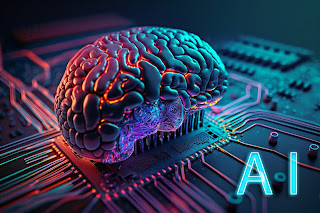EOTO Mediasphere - Echo Chamber
In today's world with the convenience of online information, where everyone's thoughts are a post away, it is easy to be comfortable with the familiar. What happens when our comfort zones are unreliable, promoting isolation and one way of thinking?
An echo chamber is an environment where people only encounter information or opinions that reinforce their own. Echo chambers can create misinformation and misshape a person’s perspective so they have difficulty valuing opposing viewpoints and discussing complicated topics. Uniquely, the internet has its own form of isolation, called a filter bubble, which is created by algorithms that keep track of what you click on.

The likeness of information has several effects on society. Positively, echo chambers
enhance engagement among like-minded individuals, creating niche communities with relevant content for that particular group. The echo chamber may lead to a
decline in critical thinking skills due to the lack of differing views. As society is now influenced by biased information, it is important to make informed and unbiased decisions. Additionally, limited empathy and understanding will reduce exposure to other opinions as well as hinder the creation of meaningful and lasting relationships with peers.
A study investigated factors influencing individuals' news consumption and insights into factors influencing susceptibility to filter bubbles online, and the correlation with voting. The results showed that age, male gender, higher levels of Openness, and lower levels of Right-Wing Authoritarianism (RWA) were predictors of the number of news sources consumed. A small percentage exclusively relied on news feeds from social networking sites. Those reluctant to vote showed the lowest diversity in news source consumption.
Social media is widely marketed as an interconnected environment that enables content sharing, collaboration, and shared dialogue. Older individuals tend to engage with a range of sources, but moving more digitally, it is harder for them to leave the echo chamber and research online. In contrast, younger generations, often are skilled and only use technology to receive information, as we grew up researching sources via the web.
These echo chambers also affect artificial intelligence developments. AI risks developing skewed perspectives and biases influenced by the data being fed. Overrepresentation of dystopian themes in AI training data can lead to askew with human values. A curved focus limits the effectiveness of AI in diverse applications and ethical decision-making.
It is important to explore the differences between social media platforms and how they influence information spreading, especially when they form echo chambers. To assess the different dynamics, there was a comparative analysis of more than 100 million pieces of controversial content discussing gun control, vaccination, abortion, etc. from Gab, Facebook, Reddit, and Twitter. The analysis focuses on two main factors: sameness in the interaction networks and bias in the information toward like-minded peers. The results show that the sameness clusters of users dominate online dynamics. However, a direct comparison of news consumption on Facebook shows higher segregation.

The echo chambers of social media are direct and have no sense of occasion. Its comments could vary from kudos to likes. This dynamic stands in stark contrast to the more nuanced and diverse interactions found in real-life echo chambers formed by actual individuals. Within the realm of social media, augmented reality mirrors in stores and mobile applications contribute to an enriched user experience by delivering authentic feedback without the need for face-to-face interactions.

Scholars assert that social networks and search engines contribute to a
group polarization effect. When
examining a diverse range of media sources, people engage with varying points of view, change their opinions, encounter conflicting information, and fact-check content. Contrary to the perception of social media as a primary source of information, it ranks at the bottom in terms of trustworthiness for news, with traditional media such as television, print, and online sources being more trusted in the public sphere, particularly in countries like Britain where television, like BBC, holds the highest trust.
Today, with the turbulent Israel-Palestinian conflict, the limited environments reinforce preexisting beliefs, deepening the division between opposing sides. Echo chambers heighten polarization during conflicts, creating division between opposing sides. The situation intensifies a cycle of distrust, fear, and resentment, which makes it difficult to effectively solve problems in echo chambers, animosity thrives, heightening tensions between the conflicting nations. One-sided narratives and inflammatory content perpetuate negative stereotypes, hindering the chance for mutual understanding and the possibility of public support for a future peace agreement.

In echo chambers, various viewpoints are often dismissed or ridiculed, fostering an unfriendly atmosphere that hinders constructive conversations, conflict resolution, and reconciliation. Confirmation bias can create a cycle where individuals are consistently exposed to perspectives that validate their existing views. According to science journalist David McRaney, “The fact that social media platforms confirm what we already believe is the reason many people use them in the first place,” “If the platforms didn’t do that, they wouldn’t be successful.”Posts and articles that evoke strong emotions, like anger, sympathy, or outrage, tend to attract significant attention and engagement on social media platforms. While this trend is not exclusive to the Israel-Palestinian conflict and is common in the digital age, the extremism of this particular conflict magnifies the impact. This heightened emotional state has the potential to obscure individuals' moral judgments, shaping how they perceive and respond to content.

Acknowledging the role of online platforms and how they create and reinforce echo chambers is the first step to breaking away. This will create a more open, and informed approach to understanding conflict. There are key five strategies to follow: to mitigate the impact of echo chambers, individuals should acknowledge their biases, seek external opinions, appoint a devil’s advocate, form diverse teams, and perform pre- and post-mortem analyses.
Overall, these digital environments, where individuals encounter information that reinforces their own views, contribute to societal polarization, hinder critical thinking, and shape the biases of artificial intelligence.










































